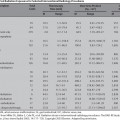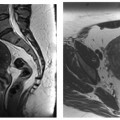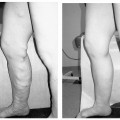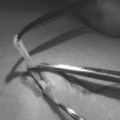10 Clinical Perspective: Uterine Fibroid Embolization (Interventional Radiology) James Spies Given the frequency that uterine fibroid embolization (UFE) is being performed in today’s interventional practice, it is hard to believe that just 10 years ago the first experience in the United States was reported by Goodwin at the 1997 Society of Cardiovascular and Interventional Radiology (now the Society of Interventional Radiology [SIR]) Annual Meeting in Washington, DC.1 Although the procedure had been published in the English literature in 1995 by Ravina et al,2 it was Goodwin’s report that triggered the media’s and scientific community’s interest that led to UFE’s rapid adoption into practice in the United States. A decade is a very brief time for a new therapy to become so firmly established in the care of patients with a given clinical condition. With this in mind, it is remarkable that UFE has progressed so far in its assessment. We have a very detailed understanding of this therapy and are now exploring its last frontiers, which include long-term outcome, comparative outcomes, and reproductive impact of the procedure. It is worth a few moments to discuss the development of UFE because it is a somewhat atypical procedure in comparison to what has been developed by interventional radiologists (IRs) over the past 40 years. For most IR procedures there are typically a few initial reports in small groups of patients and usually one or two larger follow-on case series. Perhaps there will be one study of outcomes of up to 12 to 24 months or a case series on complications. The procedure is accepted into practice and investigations into various aspects of the treatment are then few and far between. In contrast, the story for UFE has been much different. There are dozens of case series reporting on UFE; with at least 10 larger than 100 patients. There is a registry that enrolled 3000 patients,3 there have been four randomized studies published,4–7 and now outcomes at 5 years have been reported for three series.8–10 There are several reasons for this remarkable research productivity related to UFE. The first is that reimbursement for the procedure was available from its introduction. Most new therapies require several years of poorly reimbursed or nonreimbursed experience before insurers are willing to accept the treatment. However, the availability of a nonspecific, noncentral nervous system embolization current procedural terminology (CPT) code of 37204 for the billing of the procedure allowed investigators to rapidly recruit patients to their studies. Unknowingly, insurers funded the research that allowed the procedure to be validated. It is extraordinarily fortunate that this was the case, as this procedure was directed at patients typically treated only by gynecologists who would be unlikely to support reimbursement for this procedure early on. The insurers who recognized this procedure as a new therapy for fibroids often developed policies refusing coverage based on assessment by the gynecology members of their medical advisory committees. There were some insurers who took a progressive view of this procedure and allowed it to be reimbursed for patients on research protocols. I am referring to the leadership of Arnold Cohen, M.D. of Aetna (Aetna, Inc., Hartford, CT), a gynecologist in charge of the company’s national policy in this area. He recognized the potential of UFE as an alternative to hysterectomy for the treatment of fibroids and encouraged its evaluation. There is no doubt that insurance coverage for UFE was a key factor in the success of early treatment studies. A second reason for this procedure’s rapid acceptance is that this treatment only required minimal additional training for interventionalists to perform the procedure successfully. A similar method had been in use for the management of postpartum hemorrhage for at least 15 years. In addition, interventionalists were already well versed in subselective catheterization techniques, and the use of microcatheters and particulate embolic agents. The very high technical success rates and low rates of procedural complications were likely due to the skill set broadly available in the community. This is not to say that there was not a need for new knowledge and skills to care optimally for patients undergoing this procedure; I will discuss the unmet needs in this regard in a later section. However, the average interventionalist could easily succeed in this therapy and this fact stimulated its acceptance. A third factor in UFE’s success is that the procedure did not require the development of any new devices. All the tools were on the shelf in most interventional suites. Although there certainly has been innovation in the materials and catheters available for this technique (several embolics had been developed specifically for the procedure), there were excellent outcomes from the materials that had been in historic use within IR. The sudden growth in sales of these products has stimulated interest among investors and start-up companies to join the market in this procedure. Biosphere Medical (Rockland, MA), Biocompatibles (Farnham, UK), and other corporations were formed, in large part, based on a mission of developing and marketing new products for UFE. The contributions of the companies in this field should not be underestimated.
Lessons from the Development of Uterine Fibroid Embolization
Stay updated, free articles. Join our Telegram channel

Full access? Get Clinical Tree








